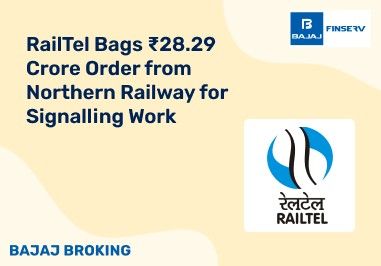BAJAJ BROKING
PDP Shipping & Projects IPO is Open!
Open a Free Demat Account
Trade Now, Pay Later with up to 4x
Track Market Movers Instantly
Strike Price In Options
What Is Strike Price?
What is the strike price of an option? A striking price, also known as the exercise price, is an important consideration in options trading. It is the price at which an option contract holder can purchase (in the case of a call option) or sell (in the case of a put option) the underlying asset, such as a stock or commodity. This price is set at the time the options contract is formed and remains constant during the contract’s duration. The strike price plays a pivotal role in determining the profitability and feasibility of an options trade.
In the context of call options, a lower strike price indicates that the option is “in the money” when the underlying asset’s market price rises, making it more valuable. In put options, a lower strike price signifies that the option is “in the money” when the underlying asset’s market price is lower. Investors and traders carefully select strike prices based on their market expectations and risk tolerance, aiming to maximize potential gains or limit potential losses. The choice of strike price is just one of several crucial decisions in options trading, alongside factors like the expiration date and the current market conditions.
What is The Relationship Between Strike Price and the Underlying Security?
In the realm of options, the interplay between the strike price and the underlying security is of paramount importance as it wields a direct influence on the value of the options contract and the dynamics of trading. The strike price defines the specific price at which the holder of an options contract can either purchase or sell the underlying security, which may encompass assets like stocks, commodities, or other investments.
Several key aspects define this relationship:
- Intrinsic Value: The intrinsic value of the options contract hinges on the variance between the prevailing market price of the underlying security and the strike price. For call options, when the market price surpasses the strike price, the intrinsic value is positive. Conversely, for put options, a positive intrinsic value emerges when the market price falls below the strike price.
- In-the-Money, At-the-Money, and Out-of-the-Money: The relationship between the strike price and the market price categorizes options into in-the-money (ITM), at-the-money (ATM), and out-of-the-money (OTM). An ITM option has intrinsic value, an ATM option has a strike price equal to the market price, and an OTM option has no intrinsic value.
- Risk and Reward: The choice of strike price significantly impacts the risk and potential reward of an options trade. Lower strike prices are associated with higher potential gains in call options but involve more risk, while higher strike prices offer a lower upfront cost but less potential for profit. In put options, it’s the opposite: lower strike prices reduce potential losses, while higher strike prices offer lower upfront costs but limited profit potential.
- Breakeven Points: The strike price also influences the breakeven points for options traders. For call options, the breakeven point is the strike price plus the premium paid. For put options, it’s the strike price minus the premium paid.
The strike price is a pivotal factor that defines the options contract’s characteristics and determines how it relates to the current market price of the underlying security. Traders choose strike prices based on their market expectations and risk tolerance, seeking to balance potential gains and losses while aligning with their investment strategies.
Types of strike prices
There are several types of strike prices in options trading, each serving a specific purpose and affecting the characteristics of the options contract. Here are the main types:
- In-the-Money (ITM) Strike Price:
- An ITM strike price is one where the market price of the underlying security and the strike price have a significant difference.
- For call options, an ITM strike price has a market price higher than the strike price.
- For put options, an ITM strike price has the market price lower than the strike price.
- ITM options typically have intrinsic value and are more expensive due to their favourable position relative to the current market price.
- At-the-Money (ATM) Strike Price:
- An ATM strike price is where the strike price equals the current market price of the underlying asset.
- ATM options often have both call and put options with strike prices at or very close to the market price.
- ATM options are considered neutral, as they have no intrinsic value.
- Out-of-the-Money (OTM) Strike Price:
- An OTM strike price is one where the market price and the strike price have no overlap or are unfavourable to the holder of the option.
- For call options, an OTM strike price has the market price lower than the strike price.
- For put options, an OTM strike price has the market price higher than the strike price.
- OTM options are less expensive due to their unfavourable position relative to the market price.
- Near-the-Money (NTM) Strike Price:
- NTM strike prices are close to the current market price of the underlying asset but not exactly at the moment.
- Traders may use NTM options to balance potential gains and risks.
- Deep-in-the-Money (DITM) and Deep-out-of-the-Money (DOTM) Strike Prices:
- DITM strike prices are significantly ITM, while DOTM strike prices are significantly OTM.
- These options may have very high or low intrinsic value, respectively, and are used in specialized strategies or for specific market expectations.
- Fixed Strike Price vs. Floating Strike Price:
- Fixed strike prices are predetermined and remain constant throughout the life of the options contract.
- Floating or dynamic strike prices are adjusted periodically based on changes in the underlying asset’s price or other factors. These are common in some exotic options.
The choice of strike price is a critical decision for options traders, as it directly impacts the risk and potential reward of the trade. It is influenced by market expectations, investment goals, and the specific strategy employed. Traders carefully consider the type of strike price that aligns with their trading objectives.
Conclusion
In conclusion, strike prices are a cornerstone of options trading, shaping the very nature of options contracts and their relationship with the underlying securities. The selection of a strike price can exert a substantial impact on a trader’s risk-reward profile, their perspective on the market, and their overarching trading strategy. Each grouping of strike prices offers distinct merits and drawbacks. For instance, an in-the-money (ITM) option boasts intrinsic value, an at-the-money (ATM) option maintains a neutral position, and an out-of-the-money (OTM) option provides a more cost-effective but riskier. Traders must carefully consider their market expectations, risk tolerance, and financial goals when selecting a strike price.
Moreover, strike prices are not static; they are integral to strategies like covered calls, protective puts, and vertical spreads, allowing traders to fine-tune their positions and tailor their investments to evolving market conditions. Understanding the role of strike prices is essential for those venturing into the complex world of options trading, where each strike price choice holds the key to unlocking opportunities and managing risks in pursuit of financial success.
Disclaimer: Investments in the securities market are subject to market risk, read all related documents carefully before investing.
This content is for educational purposes only.
Share this article:
Read More Blogs
Our Secure Trading Platforms
Level up your stock market experience: Download the Bajaj Broking App for effortless investing and trading













